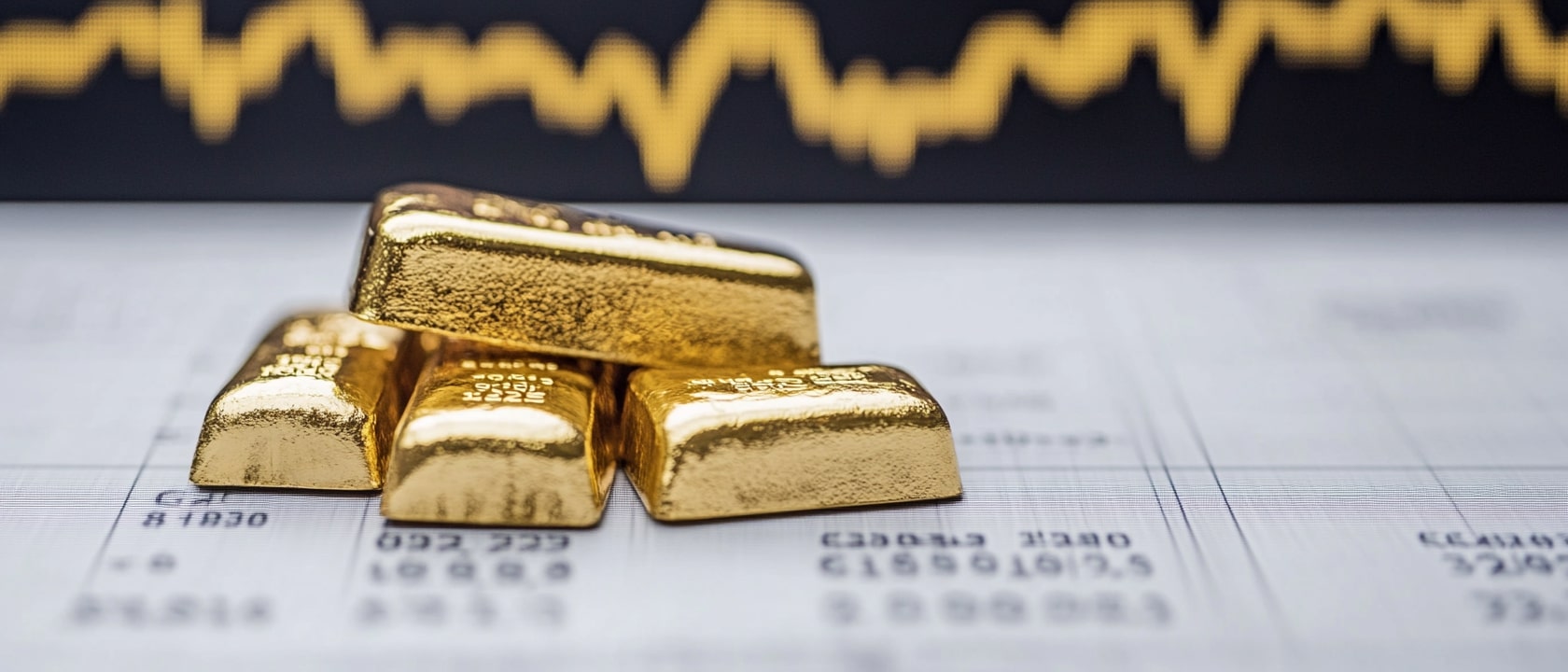
Gold Surges to All-Time Highs Amid Fed Rate Cuts and Global Turmoil: Can $3,000 Be Next?
With the Federal Reserve slashing rates, geopolitical tensions escalating, and central banks aggressively buying, gold’s momentum shows no signs of slowing as markets brace for new highs | That's TradingNEWS
Gold Continues to Surge Amid Rate Cuts, Geopolitical Tensions, and Central Bank Demand
Gold has maintained its momentum, crossing the crucial $2,600/oz mark and setting a new record at $2,635.05/oz, driven by factors ranging from central bank policies to escalating geopolitical conflicts. As of midday Monday, spot gold was trading at $2,627.34/oz, with US futures climbing 0.3% to $2,653.70/oz. This rise marks the continuation of a 27% rally in 2024.
Federal Reserve Rate Cuts Drive Gold Higher
The recent decisions by the Federal Reserve have had a direct impact on gold’s ascent. Following a significant rate cut of 50 basis points (bps) last week, further reductions are expected, creating an environment highly favorable to non-yielding assets like gold. Minneapolis Federal Reserve President Neel Kashkari indicated that smaller rate cuts, possibly in the range of 25 bps, are likely during the Fed’s two remaining meetings in 2024. This dovish stance, reinforced by Chicago Fed President Austan Goolsbee’s call for substantial rate reductions to support the US economy, has added fuel to gold’s rally. Historically, lower interest rates reduce the opportunity cost of holding gold, which is why each rate cut has translated into heightened demand for the precious metal.
Geopolitical Risks Strengthen Safe-Haven Demand
The global political landscape, particularly in the Middle East, continues to bolster gold’s safe-haven appeal. Recent Israeli airstrikes against Hezbollah in Lebanon, which resulted in nearly 500 fatalities, have stoked fears of a broader regional conflict. With Iran’s involvement as Hezbollah’s primary backer, the potential for further escalation remains high, driving investors to gold as a hedge against geopolitical risks.
This trend has been further supported by ongoing conflict in Ukraine, where tensions show no signs of de-escalation. As a result, central banks have increased their gold reserves, anticipating further market turbulence. Central banks are a significant force in the gold market, with robust purchasing continuing in 2024, reinforcing the bullish outlook for the yellow metal.
China’s Economic Stimulus and Its Effect on Gold
China’s decision to cut its reserve requirement ratio (RRR) by 0.5%, its most aggressive monetary easing since the pandemic, has added another layer of support to the gold market. This move, aimed at injecting liquidity into the banking system and boosting the stock and property markets, has sparked renewed demand for commodities, including gold. The People’s Bank of China (PBOC) has signaled more rate cuts to come, with estimates suggesting that these measures will release over $142 billion into the financial system.
While China’s economy has faced headwinds, including a slowdown in consumer spending and industrial output, the latest stimulus measures could help reignite demand for gold. Historically, China is one of the largest consumers of gold, and any resurgence in its economy could lead to increased purchasing of the metal, further pushing prices upward.
Gold’s Technical Position: Momentum Building Toward $3,000
From a technical perspective, gold remains in a strong upward trend, with analysts eyeing the $3,000 level as a potential target by the end of 2024. The 50-day exponential moving average (EMA), currently racing towards the $2,530 support level, adds further support to this bullish outlook. The $2,530 level, which previously acted as resistance, is now expected to act as a solid floor, providing value investors an opportunity to enter the market on any short-term dips.
While a pullback might occur, gold’s long-term outlook remains positive. The broader technical trend, as seen through key indicators like the bull market support band, points to continued strength. Gold has consistently found support at these levels throughout its current bull market, making any dips likely to be viewed as buying opportunities rather than reasons to exit positions.
US Dollar Weakness and Its Role in Gold’s Rally
A significant factor contributing to gold’s rise is the weakening US dollar, driven by the Federal Reserve’s accommodative monetary policy. As the dollar depreciates, commodities priced in dollars, including gold, become more attractive to foreign buyers. This dynamic has led to increased demand, particularly from Asian economies like China and India. With further rate cuts on the horizon, the dollar is expected to remain under pressure, providing additional support for gold prices.
Gold vs. Equities: A Safe-Haven Hedge for Market Uncertainty
Gold’s role as a hedge against equity market downturns has become increasingly important, especially as major stock indices face potential volatility. Benjamin Cowen, a respected market analyst, noted that gold’s movements in early 2024 provided a key signal for the broader market, particularly for Bitcoin and other cryptocurrencies. While gold may not offer the explosive returns of equities or crypto during bull markets, it provides stability during times of market stress, making it a crucial component of any diversified portfolio.
Cowen predicts that gold could reach $3,160 by the end of 2024, with a potential rally toward $3,500 by the end of 2025. His analysis is based on historical trends, which show that gold can sustain long-term bull markets, often lasting a decade or more. Unlike cryptocurrencies, which can experience extreme volatility, gold’s slower, more measured price movements make it an attractive asset for long-term investors.
Gold and Central Bank Demand: A Long-Term Bullish Factor
One of the most significant drivers of gold’s 2024 rally has been central bank buying. As geopolitical tensions rise and economic uncertainty looms, central banks have increased their gold holdings, seeking to diversify away from fiat currencies. This trend is particularly pronounced in emerging markets, where central banks are looking to reduce their reliance on the US dollar.
The World Gold Council has reported that central bank purchases of gold have hit record highs, with demand showing no signs of slowing. This consistent buying activity provides a strong foundation for gold’s long-term bullish trend. As central banks continue to view gold as a critical reserve asset, their purchasing power will likely keep prices elevated.
Short-Term Volatility but a Long-Term Bullish Outlook
In the short term, gold may experience volatility due to fluctuating economic data and dollar movements. For instance, personal consumption data and jobless claims set to be released later this week could influence the Federal Reserve’s decisions on future rate cuts. However, despite any near-term choppiness, the overall outlook for gold remains positive.
Rahul Kalantri, VP of commodities at Mehta Equities, has pointed out that gold has support at $2,605-$2,588 and resistance at $2,642-$2,660. With central banks continuing to buy gold and geopolitical tensions unlikely to subside soon, the precious metal is expected to maintain its upward trajectory.
Conclusion: Gold’s Bull Market Continues
Considering all factors—Federal Reserve rate cuts, geopolitical risks, central bank buying, and China’s economic stimulus—the gold market is poised to continue its bullish trend. The current momentum suggests that gold could surpass $3,000 in the coming year, making it an attractive investment for those seeking a safe haven amid global uncertainty. For now, gold remains a buy, supported by both technical and fundamental factors, with further upside potential as we move into 2024.
















